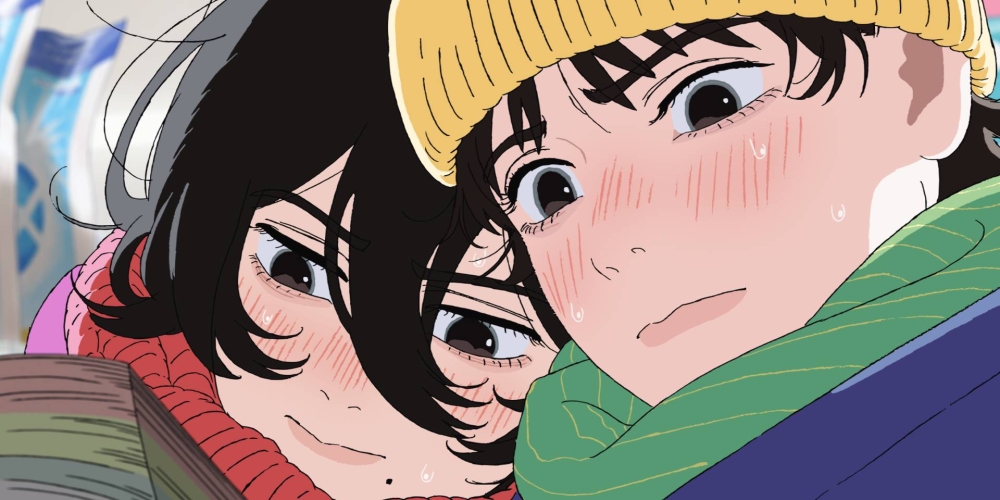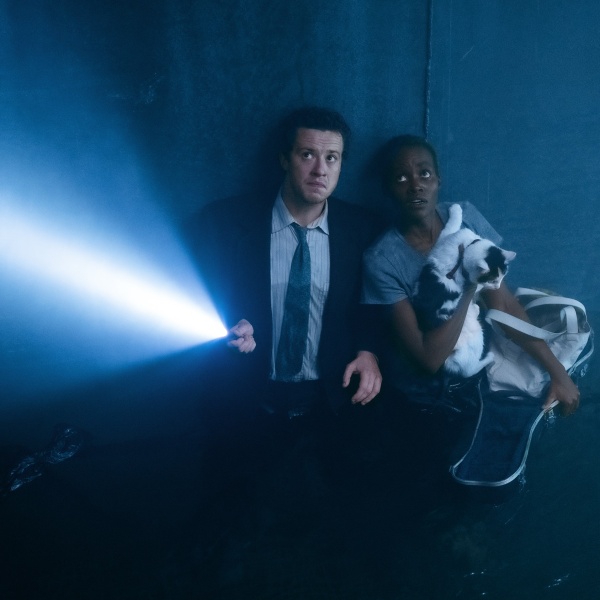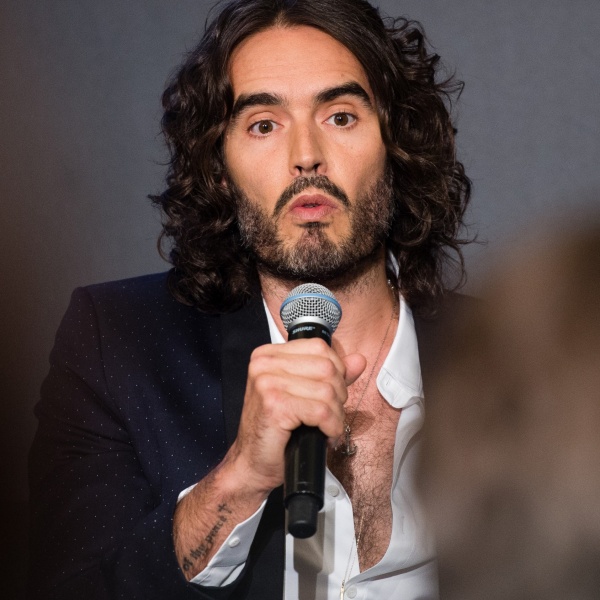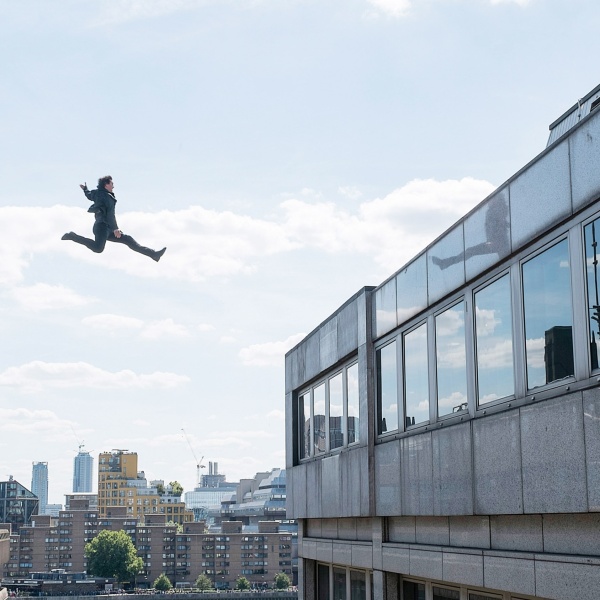Faithfully adapted from a popular one-shot web manga by “Chainsaw Man” creator Tatsuki Fujimoto, “Look Back” is a 53-minute anime film about the endless toil of artistic creation. In that sense, its running time seems like something of a cruel joke, as every scene of writer/director Kiyotaka Oshiyama’s ultra-compact stunner returns our attention to the painstaking nature of its own making — untold years and lifetimes poured into a project that speeds by in a little bit less than an hour.
And yet, this lilting tale’s blink-and-you’ll-miss-it brevity proves inseparable from the lasting power of its punch-to-the-gut impact. Life is short, “Look Back” reminds us in both form and content, and so much of it is often spent in service to work that might seem to betray the mortal urgency of being alive. But the fleeting nature of Oshiyama’s film, which so fluidly renders eons of labor with the lightness of memory and the brilliance of a shooting star, is what ultimately allows it to crystallize a truth that most artists can only hope to accept for themselves, and that many anime fans — already endeared to the self-inflicted misery that someone like Hayao Miyazaki has managed to forge into a magic kingdom of his own suffering — have come to appreciate second-hand: Making things isn’t a waste of time or a way of isolating oneself from the world, but rather the most beautiful way of belonging to it.
When Ayumu Fujino (voiced by Yumi Kawai) first discovers her love of drawing, it grants her a special purpose that refuses to be shared. Ayumu is the star manga artist at her suburban Japanese grade school, and she delights in the dopamine hit of small-time celebrity that she receives when her weekly comics are published in the school paper. Needless to say, Ayamu is none too pleased by the editor’s decision to reserve some print space for a girl named Kyomoto (Mizuki Yoshida), who remains enrolled as a student despite the fact that she’s a shut-in who’s never shown up for school.
Kyomoto’s stuff is good. Maybe too good. Her writing is whatever, but her pencil-work is divine. Already obsessed with manga at the expense of her friendships, Ayamu is pushed to get even better… until her rival’s comics become so advanced that decides to quit drawing altogether. And perhaps that would have stuck if not for the fateful day that Ayamu is assigned to hand-deliver Kyomoto’s diploma; no one else could’ve inspired the hyper-anxious hermit to open her bedroom door, but Kyomoto is such a devoted fan of Ayamu’s work that she can’t help but ask for an autograph. And so, a beautiful friendship is born — one that brings Kyomoto out of her shell, and restores Ayamu’s ego as her town’s alpha manga auteur.
From that friendship blossoms a bountiful collaboration, as the girls join powers and quickly become an award-winning duo. Always drawing away in one of their bedrooms or racing to the nearest convenience store in order to see their work on the shelves, the inseparable besties sprint hand-in-hand through the years at the speed of a montage, Ayamu always looking back at the ecstatic Kyomoto behind her as they both run so fast that all of the moments they share together immediately blur into memories. Rather than pad out the skeletal nature of Fujimoto’s text, Oshiyama preserves — even heightens — the source material’s emphasis on emotions over plot, the director rightly entrusting the details to his own artistry, and that of his collaborators (Haruka Nakamura’s soaring, sentimentally instructive score is so instrumental to the basic shape of this movie that she deserves a co-writing credit).
The first production of his Studio Durian, which Oshiyama assembled from veterans of Studio Ghibli, Production I.G., MAPPA, and several other major anime powerhouses, “Look Back” is every bit as lovingly well-rendered as its story requires. The character designs are realistic but supernaturally expressive, the soft lines on Ayamu and Kyomoto’s faces rich with feeling in a way that underscores the vital importance of each cel; what Ayamu and Kyomoto might see as another hand-cramping all-nighter is clear to us as the best times of their lives. That effect is further exaggerated by the film’s richly detailed environments, as the cramped bedrooms where the girls do their work are as saturated with the ache of lost time as the Makoto Shinkai-like skies that stretch across the windows of the studio where one of the characters works alone as an adult.
Yes, life inevitably comes between the girls at some point, as Ayamu grants Kyomoto the courage to apply to art school and discover if she can stand on her own two feet. As fans of the manga already known, the friction that choice introduces to the friendship pales in comparison to the tragedy that follows — a shock so immense and out of nowhere that it’s almost as hard to believe in this context as it was when a version of the same event transpired in real life.
On the one hand, the horror is almost too huge for this tiny movie to contain it, like a bowling ball dropped into a half-empty bathtub. On the other hand, this swirling breeze of a story requires a crisis of that magnitude in order to confront its characters with the meaninglessness of the art they make, and the extraordinary importance of the joy they found in making it together.
As the recursive final minutes of “Look Back” ribbon through time and around one another, the sheer density of Oshiyama’s film allows its competing energies to confront each other head-on. The explosion of feelings that results from that collision is strong enough to justify the emotional rigidity of a film that only exists to produce that one perfect moment. It’s true that something terrible might have been avoided if these girls had never met in person, but that hardly seems worth sacrificing the beautiful memories that were made possible by their friendship.
“I’m glad I came out of my room,” Kyomoto says. And what is art if not a door waiting to be opened?
Grade: B+
GKIDS will release “Look Back” in theaters in New York City and Los Angeles on Friday, October. It will play in theaters nationwide on Sunday, October 6 and Monday, October 7.







